SCOR 2030
Wheel Size: 29’’
Travel: 120 mm rear / 140 mm front
Geometry Highlights:
- Sizes offered: S, M, M/L, L, XL
- Headtube angle: 64.5° / 65.5° (Adjustable)
- Seat tube angle: ~77° (Varies by size and geometry setting)
- Reach: 477 mm (size M/L)
- Chainstay length: 429 mm (size M/L)
Frame Material: Carbon Fiber
Price:
- Complete bikes: $5,199 to $9,299
- Frame w/ Fox Float Factory shock: $3,499
Blister’s Measured Weight (2030 GX, size M/L): 32.3 lbs / 14.65 kg
Test Locations: Colorado, Arkansas, Arizona
Reviewers:
- Simon Stewart: 6’, 170 lbs / 183 cm, 77.1 kg
- Jonathan Ellsworth: 5’10”, 175 lbs / 178 cm, 79 kg
Test Duration: 6 months

Intro
SCOR was born out of a pair of BMC employees working after hours to design the bikes they wanted to ride themselves, which stood out in notable contrast to the typical road- and XC-oriented offerings from BMC as longer-travel, more playful mountain bikes. Their first model, the 4060, is a highly adaptable take on a mid- to long-travel Trail / Enduro bike that’s oriented decidedly more toward a playful riding style than going flat-out fast, and now SCOR says they’re bringing that same concept to a shorter-travel package in the new 2030.
We’ve noted before that there’s a clear split in the short-travel Trail bike market, with some models feeling like beefed-up XC-race bikes, and others much more akin to slimmed-down Enduro ones, and SCOR is very clear that they see the 2030 as being in the latter camp. So how have they gone about putting the 4060 on a diet, and what does the end result look like? Let’s dive in.

The Frame
The 2030’s overall layout is essentially the same as that of the 4060 — basically, a parallel mini-link arrangement with the shock mounted low in the frame and driven by the lower link to produce its 120 mm of rear wheel travel, which is paired with a 140 mm travel fork. It’s offered in carbon fiber only, with fully-guided internal cable routing (which SCOR makes sure to point out does not include it going through the headset), and a UDH derailleur hanger for SRAM Transmission compatibility. The bottom bracket shell is a press-fit one, and there aren’t any chain guide tabs here, though a built-in upper guide is included. SCOR’s fun jump line-shaped chainstay protector carries over from the 4060, as does room for a water bottle inside the front triangle on all five sizes, an accessory mount under the top tube, and rubber protection on the lower part of the downtube.
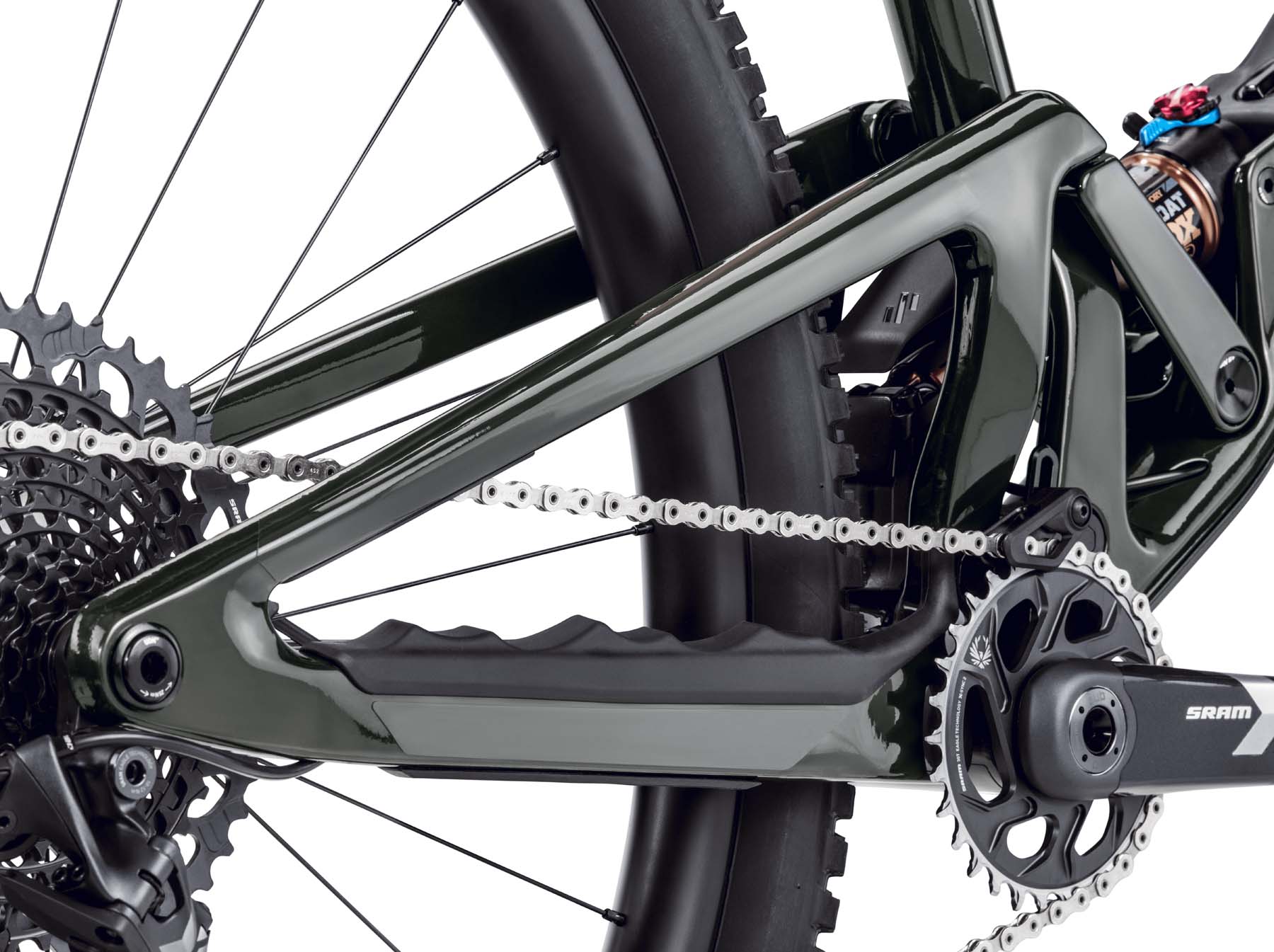
The 2030 does, however, add a downtube storage hatch underneath the water bottle mount, an upgrade from the smaller bit of in-frame storage offered on the underside of the downtube of the 4060, just in front of the bottom bracket shell. But despite cutting a hole in the downtube for said storage, SCOR says that the 2030 is tested to the same standards for strength (ASTM Level 4) as the 4060 and that it features the same steel pivot axles and other durability-oriented features as its bigger sibling as well.
SCOR also notes that it’s possible to bump the 2030 up to 130 mm of rear wheel travel by way of a 52.5 mm stroke shock (and the Fox Float that comes on the top-spec X01 build and the frame-only option is super easy to convert with only basic tools). What stroke is used for the stock 120 mm travel configuration isn’t stated, but we’d assume it’s a 47.5 mm one, in what appears to be a 185 mm long Trunnion mount configuration. SCOR doesn’t say much about the suspension kinematics of the 2030 beyond claiming that it’s fairly progressive for good support and that it pedals quite efficiently, so we’ll just have to get on one to find out more.
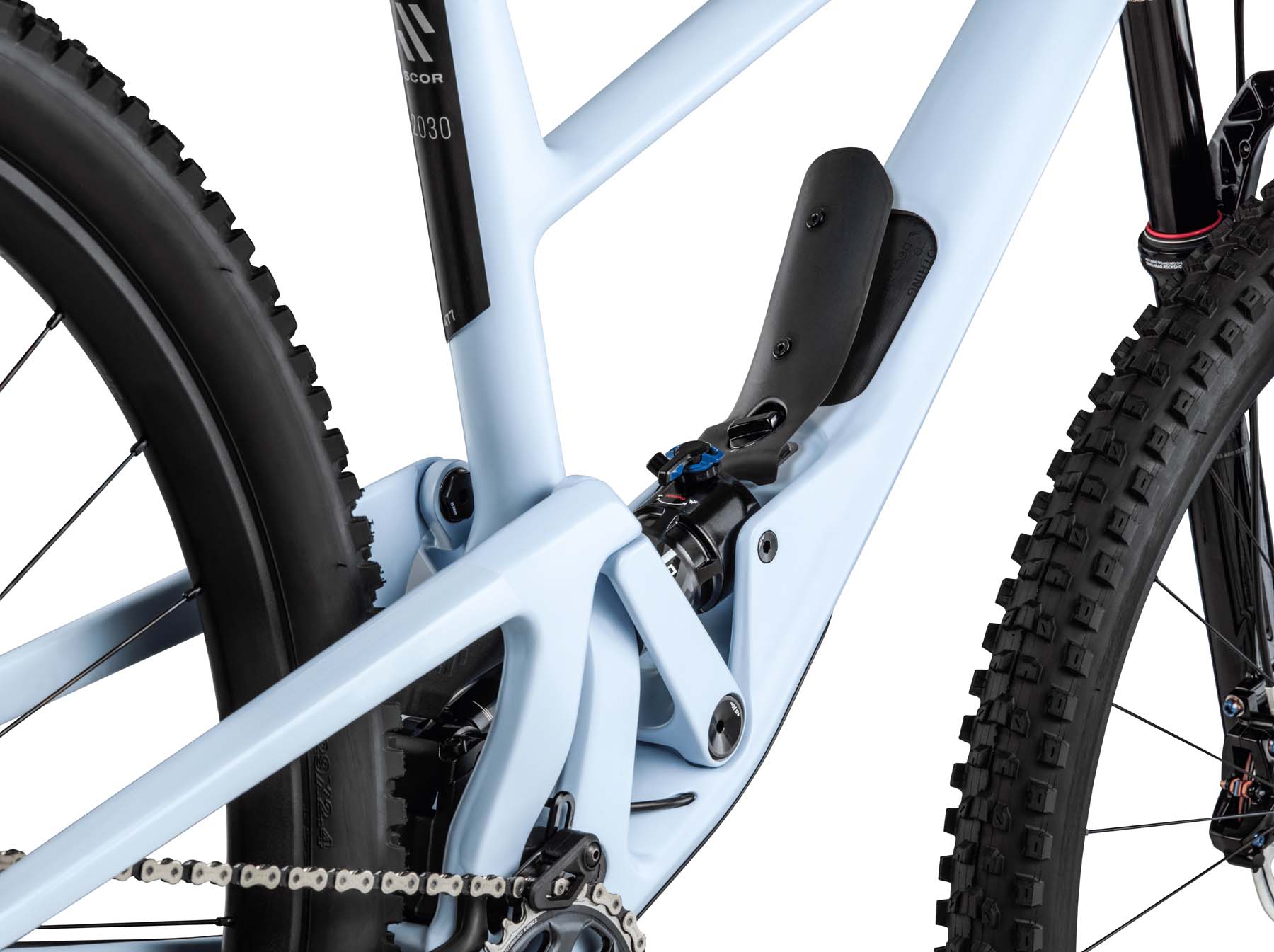
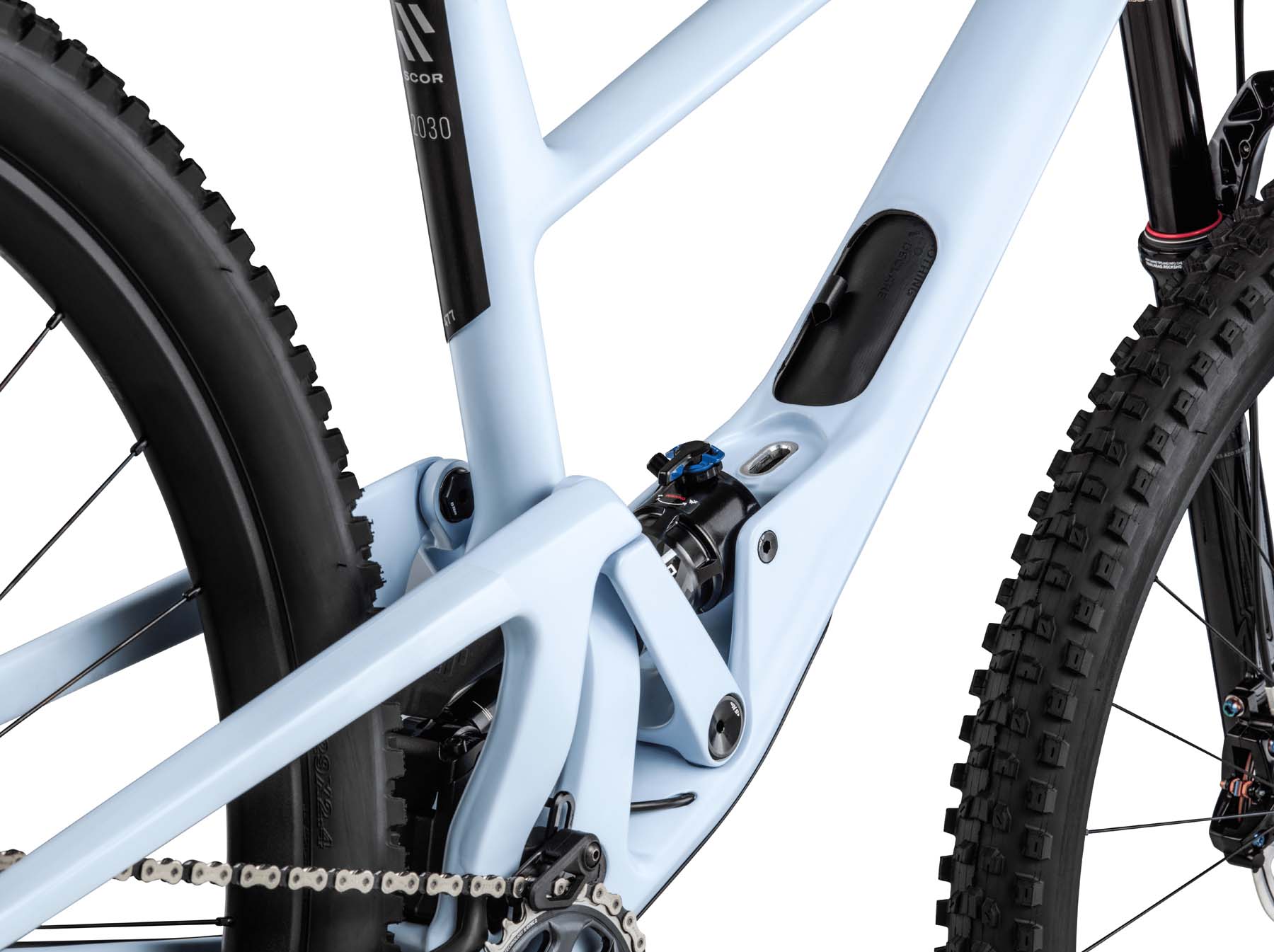
Fit & Geometry
SCOR offers the 2030 in five sizes, from Small through XL plus an intermediate M/L offering, all of which roll on 29’’ wheels at both ends. Reach ranges from 435 to 517 mm in approximately 20 mm increments, and offset headset cups allow you to toggle between a 64.5° and a 65.5° headtube angle with modest changes to the other geometry numbers. The effective seat tube angle comes in a bit over 77° (varies slightly by size and geometry setting) though the actual angle is a bit slacker at ~69°. All sizes get 38 mm of bottom bracket drop (slack headset setting) and the chainstays are notably short, with the Small, Medium, and M/L sizes starting at 429 mm and the Large and XL growing to 432 and 434 mm, respectively.
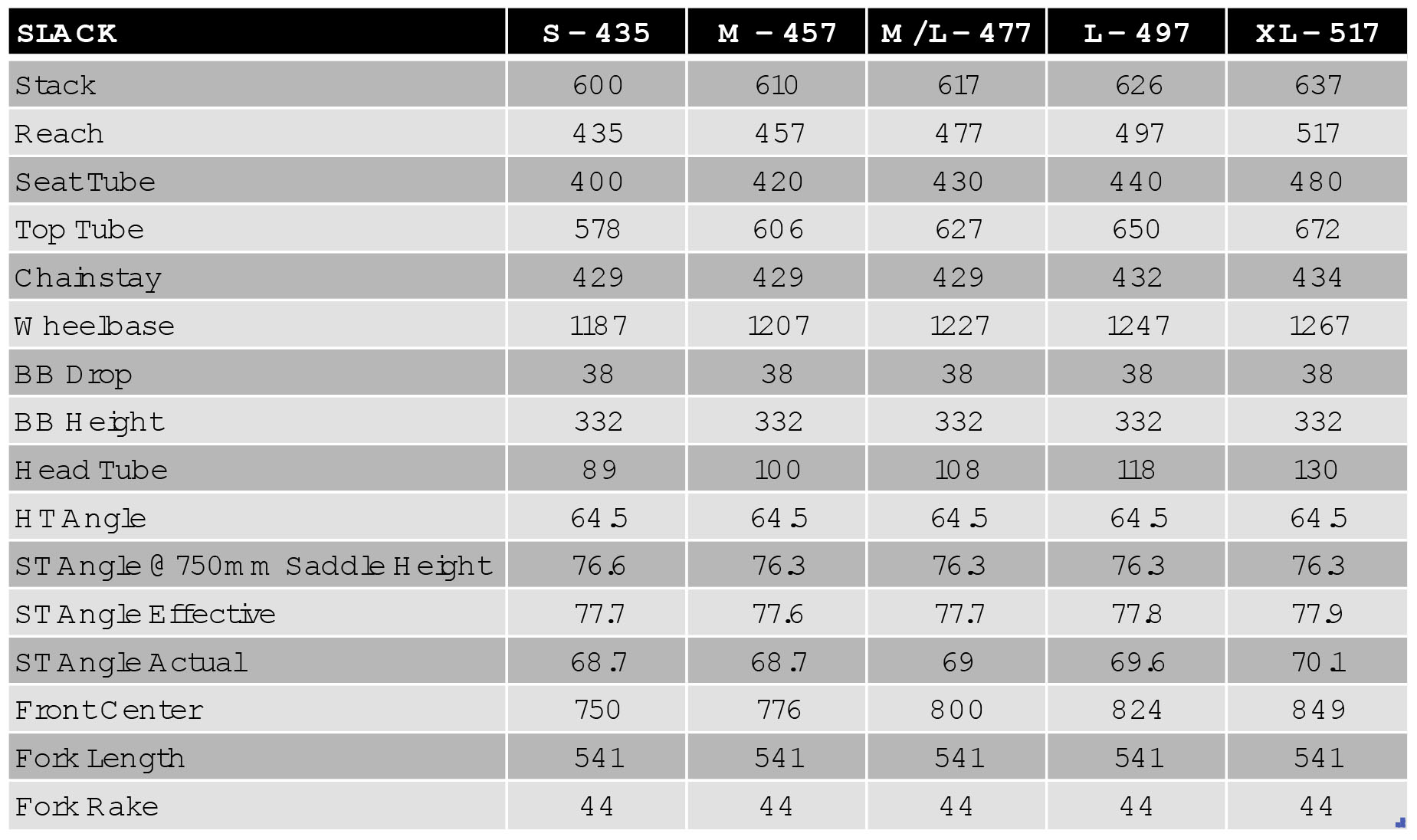
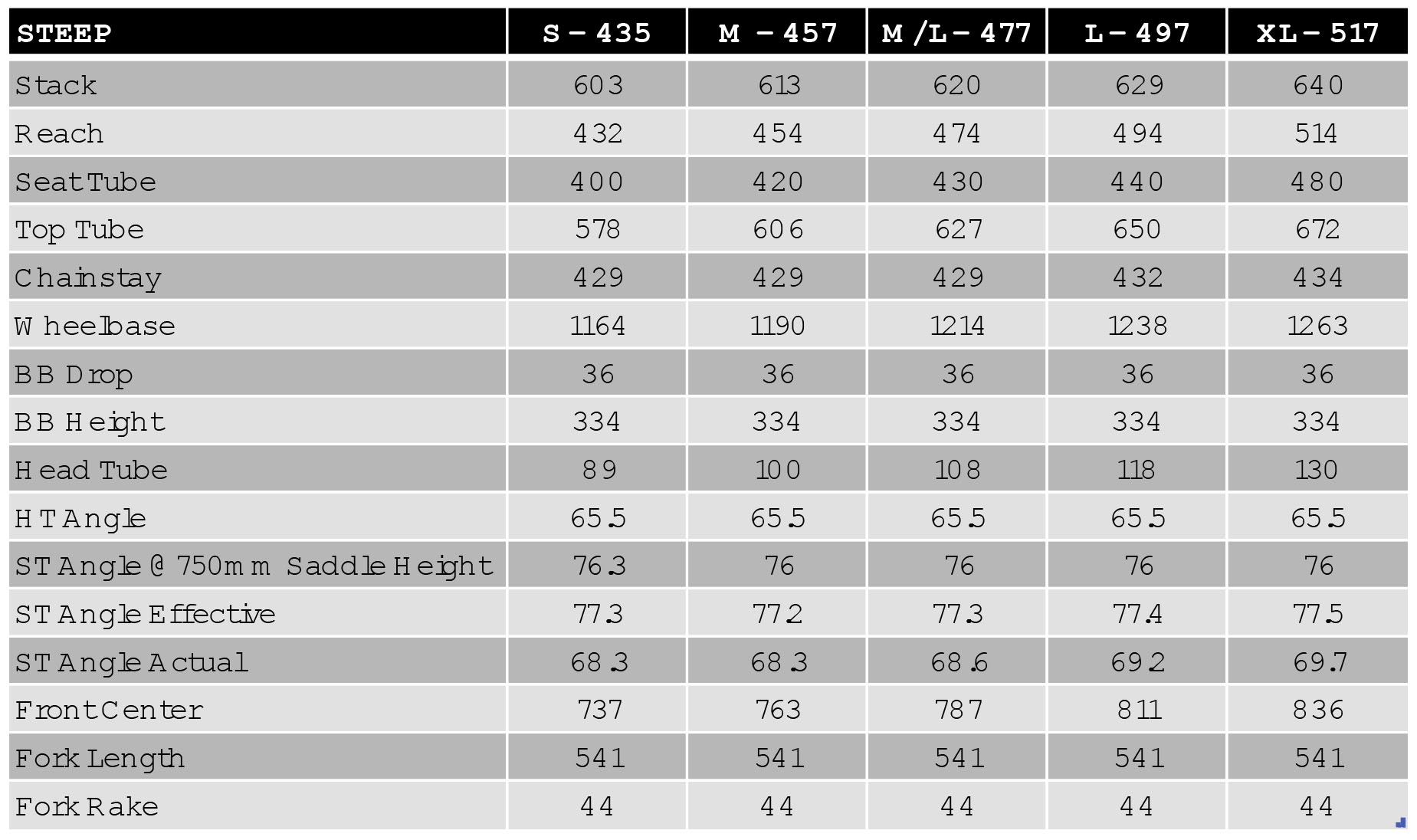
The Builds
SCOR is offering the 2030 in three different builds, all with SRAM mechanical drivetrains but a mix of Fox and RockShox suspension. A frame-only option with a Fox Float Factory rear shock is also available.
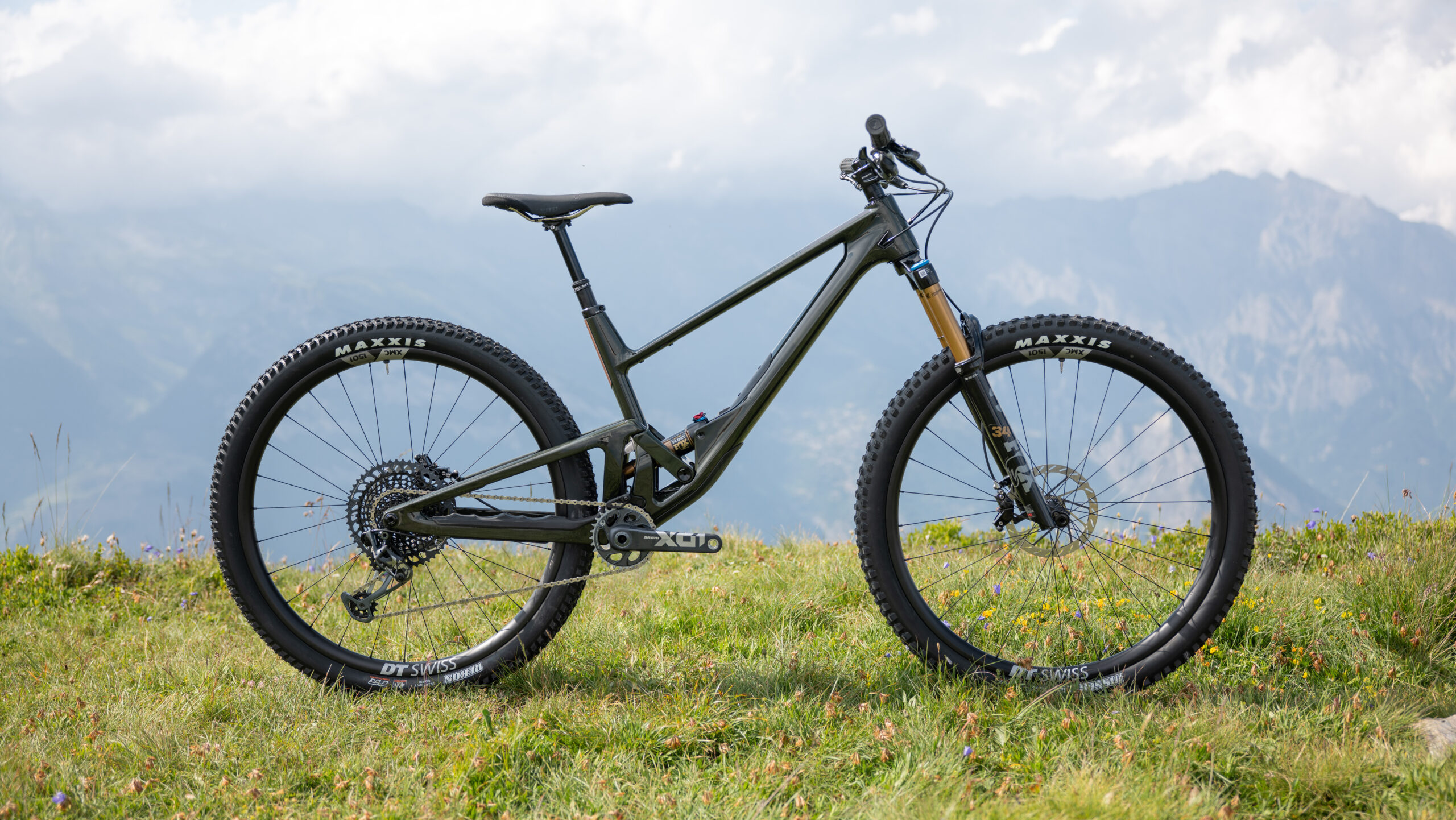
- Drivetrain: SRAM NX
- Brakes: SRAM Code R
- Fork: RockShox Pike Select
- Shock: RockShox Deluxe Select
- Wheels: XDX-530
- Dropper Post: X-Fusion Manic
- Drivetrain: SRAM GX
- Brakes: SRAM Code RSC
- Fork: RockShox Pike Ultimate
- Shock: RockShox Deluxe Ultimate
- Wheels: DT Swiss XM 1700
- Dropper Post: Bike Yoke Divine
- Drivetrain: SRAM X01
- Brakes: SRAM G2 Ultimate
- Fork: Fox 34 Factory
- Shock: Fox Float Factory
- Wheels: DT Swiss XRC 1501
- Dropper Post: Bike Yoke Divine
Some Questions / Things We’re Curious About
(1) The SCOR 4060 LT that we reviewed a while back stood out for being an especially nimble, playful-feeling take on a longer travel bike — does that carry over to the 2030 as well, in a category where sharp handling is the norm?
(2) And in light of that, are SCOR’s claims that the 2030 feels like a scaled-down Enduro bike rather than a beefed-up XC one borne out?
(3) How does the 2030 compare to some of the other more aggressive short-travel bikes we’ve been on recently, such as the Commencal T.E.M.P.O., Canyon Spectral 125, Chromag Darco, and Transition Smuggler?
FULL REVIEW
Simon Stewart: I love SCOR’s origin story. Within the halls of BMC, a designer, an engineer, and a product manager, uninspired by BMC’s mostly XC offerings, covertly started working after hours on the bike that they wanted to ride on the weekends. (Check out the full story in Ep.101 of our Bikes & Big Ideas podcast.)
Fast forward to today, and SCOR is now an established mountain bike brand with a full lineup of bikes ranging from the short-travel 2030 we’re reviewing here, to the long-travel, all-metal 6080 Z eMTB bruiser.
The 2030 is SCOR’s short-travel Trail bike offering, but don’t be too quick to judge it from its travel numbers alone. 120 mm of rear wheel travel may suggest certain ride qualities, like efficiency and climbing performance, which often come with some compromises when pointed downhill. But while the 2030 lives up to expectations when climbing, it also has some surprises when it comes to descending — let’s get into what makes the 2030 so special.
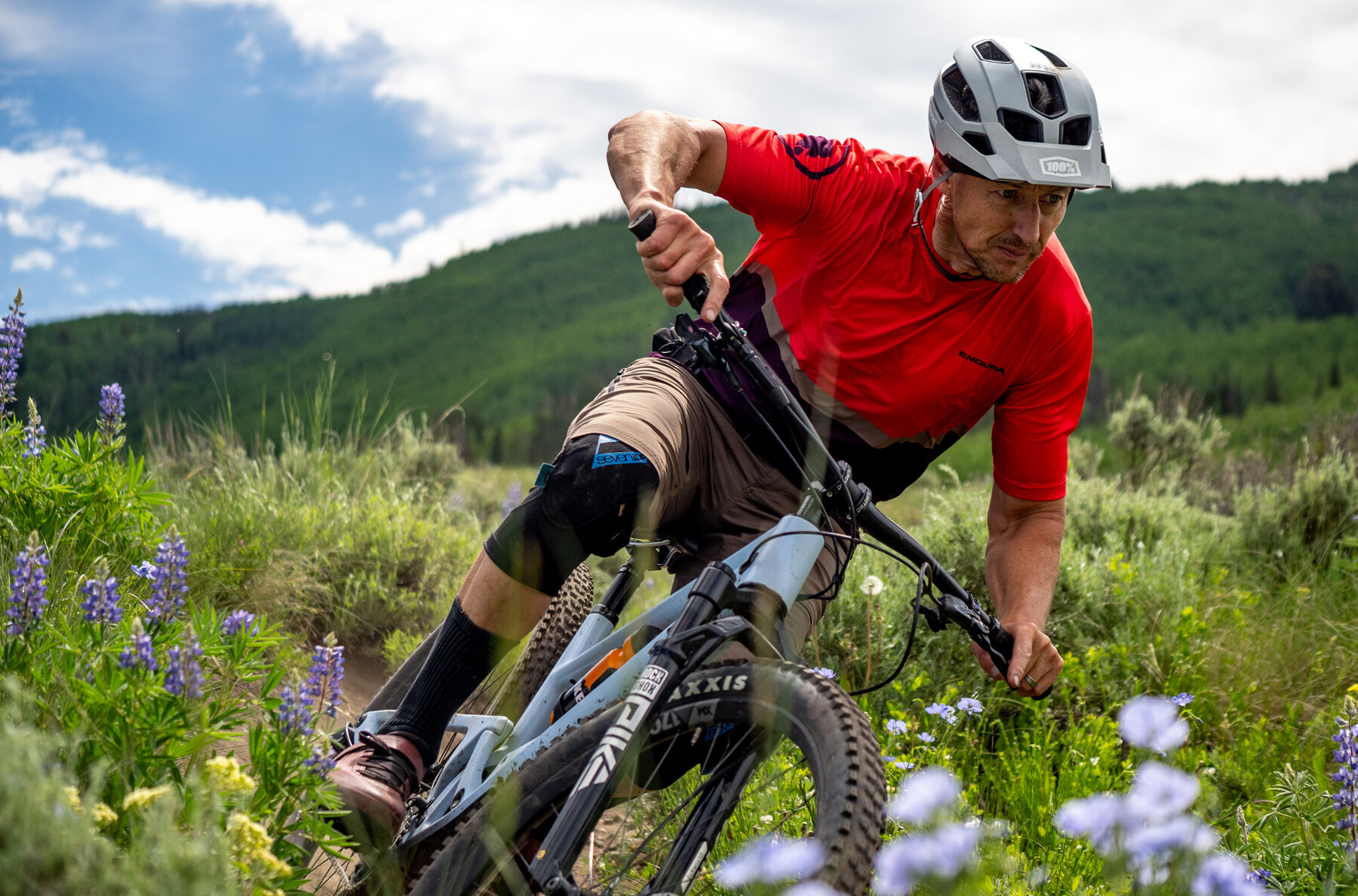
Fit & Sizing
Simon (6’, 170 lb / 183 cm, 77.1 kg): With M/L and L sizing, the SCOR 2030 has potentially two sizes that fit me. (SCOR agrees, putting me in the overlapping region on their size chart, with a little wiggle room to ride either size.) Fortunately, for my first opportunity to ride the 2030, SCOR had both sizes available. I rode both, and it only took a short spin on the size Large to confirm that the 497 mm reach was a bit on the long side for my taste.
From studying the geometry chart, I thought there was a chance that the size M/L would feel cramped. I knew I would probably need all the spacers under the stem to get the stack height up to where I like it, and factoring in the steep 77.7º seat tube and not-that-long 477 mm reach, and I was worried that the seated position was either going to feel a bit crowded or just barely in my preferred range.
However, once I got on the size M/L it felt really good, and quite a bit roomier than I expected. Visually, the actual seat angle looks pretty damn slack, and another look at the geometry chart confirms that with it being 69º. Credit to SCOR for including the effective seat tube angle measured at 750 mm of seat height in the geometry chart — that drops the effective seat angle by almost a degree and a half to 76.3º. My seat height (760 mm) is even higher, so presumably my seat tube angle is even slacker. And that explains why the fit doesn’t feel too cramped while seated.
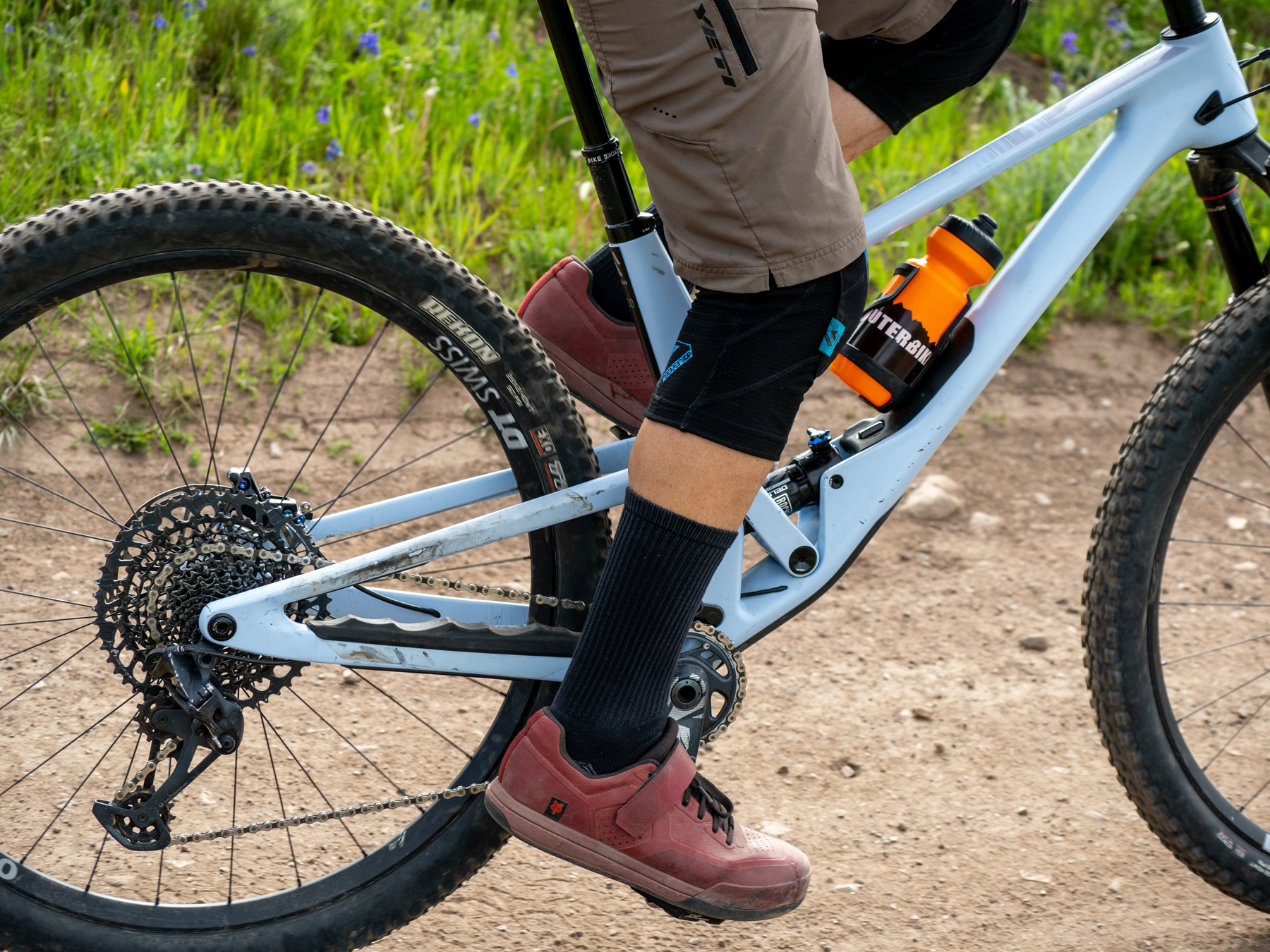
With that said, I’m starting to prefer a slightly longer reach range these days, so I ended up installing my Burgtec 50 mm rise handlebars. The handlebar swap got rid of most of the spacers under the stem, and opened the effective reach up a hair, with the added room most noticeable when riding out of the saddle.
Jonathan Ellsworth (5’10”, ~175 lbs / 178 cm, 79 kg):
I’m going to let Simon handle the more techy / nerdy stuff in this review. Also, Simon is definitely a better rider than me, so my two cents here is mostly offered on the chance that it might provide just a bit of perspective from the point of view of someone who loves to ride but is basically just “okay” on a bike.
My everyday ride is still a 2019 Santa Cruz Hightower, size Large, and I still love that bike. I’ve also become quite a fan of this SCOR 2030, and from a fit point of view, I can go back and forth between my Hightower and the SCOR 2030 very easily. So, like, Simon, I agree that the M/L 2030 is a “roomier” fit. Its cockpit feels a bit longer than that of my Hightower, both seated and standing. I was able to pedal around on both a size Large and size Medium 2030, and I wasn’t interested in either of them; for me, the M/L feels like a bullseye.
Climbing
Simon: With 120 mm of rear travel, it’s fair to have high hopes for the 2030’s climbing performance. I’m happy to report it has met those expectations, and in some cases exceeded them — I really click with how it climbs. The 2030 feels efficient and snappy, it rewards hard pedaling efforts and encourages riders to push themselves.
I tested the 2030 on some classic Colorado climbs, where you basically sit in the same position for hours at a time, and if a bike is not comfortable for long slogs, you’ll find out. The 2030 shines on these types of climbs, and I find it to have a very comfortable climbing position. When the route includes double track or fire road, as it often does, the 2030 has another ace up its sleeve with a very firm lock-out tune on the Deluxe Ultimate shock — there’s still some BMC XC DNA in the 2030.
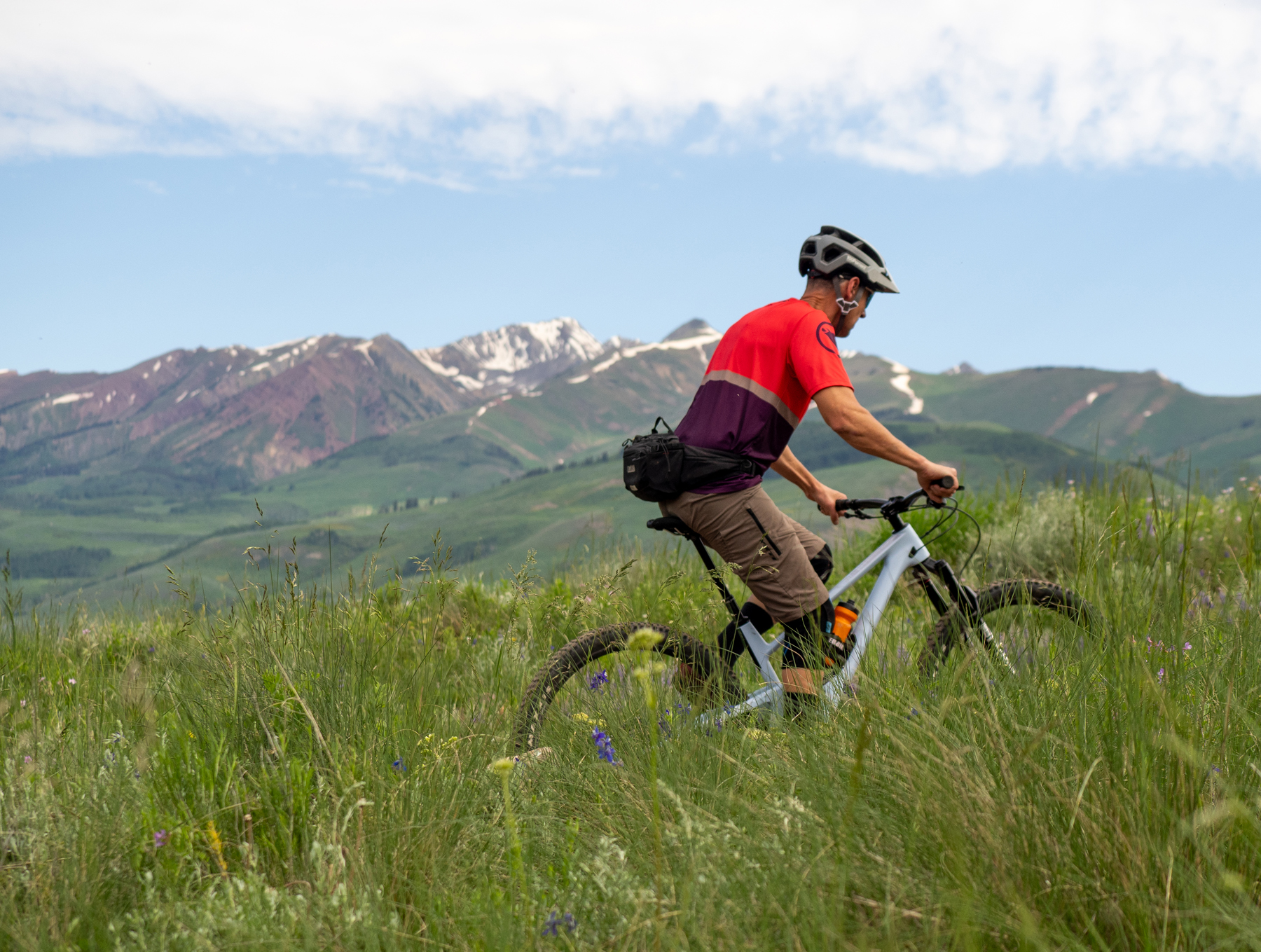
Technical climbing is very good, too. The short chainstays keep the rear tire properly weighted and help with traction on loose sections, while the relatively slack 64.5º head angle helps the front wheel roll over obstacles without losing too much momentum. The 2030 does require lowering my chest to weight the front end on steeper sections to keep the front wheel tracking — which isn’t all that surprising given the short stays, relatively slack head angle, and my preference for a higher stack height. I’ll take that trade-off any day given how those things are some of the main contributors to what I like about the 2030’s personality. The suspension does a nice job of staying active over rocks and roots while offering enough support to not be wallowy, or adversely affected by pronounced weight shifts. The 2030’s efficient pedaling platform is also an asset, giving me a bit more endurance headroom to stitch together multiple technical sections.
As I mentioned in the Fit section, the stated 77.7º effective seat tube angle slackens appreciably at my 760 mm seat height. The seat tube feels a tad slack on steep climbs, requiring a forward shift on the saddle to stay in a good position, something you typically don’t expect when the effective seat tube angle is in the high 77º range. It is only apparent on the steepest of climbs, and I don’t find that it detracts from the overall climbing performance since it doesn’t require moving forward that far, but I would prefer it to be a hair steeper.
Jonathan: I like how the 2030 climbs too, but mostly, I was blown away by seeing what Simon was doing on the bike on a couple of quite technical climbs in Bentonville. How much credit we should give him vs. the bike, I don’t know. But when the man says he liked how it climbed, believe him.
As for me, the steeper / techier climbs I was doing involved pedaling up short shots of grippy boulders around Scottsdale, Arizona (McDowell, Pima Dynamite, Brown’s Ranch, Hayden’s), and short shots around Bentonville, Arkansas. Again, I’m not the climber Simon is, but coming from my Hightower, the 2030 is certainly a more efficient pedaler. I find the Hightower to be a forgiving climber on techy steeps — with the shock open, it provides excellent traction, but nothing feels particularly efficient about it. The SCOR 2030 provides equally good traction plus notably better pedaling efficiency, so the 2030 just wins across the board w/r/t going up. (I realize there’s no surprise here, I’m just confirming what you would expect to be the case.)
Descending
Simon: SCOR says they gave the 2030 a slight focus on descending performance over climbing. It’s an excellent climber, but I think they’re spot on with that description because I was even more impressed by the 2030’s descending performance.

Jonathan: I 100% agree.
Simon: As expected for a 120mm-travel bike, the 2030’s suspension is lively, but it also has better-than-average small-bump sensitivity to go with it. The 2030’s suspension has a good bit of progression and ramps up smoothly, offering excellent support in the middle of the travel and seemingly infinite bottom-out resistance at the end. I never experienced any harsh bottom-outs, which is surprising given how hard the 2030 likes to be pushed.
Had I experienced bottom-outs, I would be more inclined to consider increasing the travel to 130 mm. Since I didn’t, and I continued to be impressed by the 120 mm of travel, I decided to leave it in the stock configuration. (We go into more detail on changing travel in the “Build” section, below).
The 2030’s suspension is quite good, but the geometry and handling steal the show for me. Its 429 mm chainstays (size M/L) are some of the shortest I’ve been on lately, especially for a full 29er, but I love how snappy and fun they make the 2030. Interestingly, I found the 2030 to prefer a centered riding position over the more forward bias that I expected it to favor given the short rear center. If there is a compromise in stability, it’s not really noticeable, but then again, the 2030 encourages such a fun riding style that high-speed stability deficiencies may be camouflaged by the fact that it’s hard to not play around all the time.

The compact fit, short chainstays, and slack head angle work together very well on the 2030, and in conjunction with the excellent suspension performance, have created a category-leading descender. I don’t think I’ve ridden a 120mm-travel bike that descends as well as the 2030.
Jonathan: Simon currently gets to test more bikes than I do, but while I hate to sound so agreeable, I agree with everything he says in the previous section; the 2030 is the best 120mm-travel descender I’ve ever ridden. In fact, over my 20+ rides on the bike, it’s been a gradual process of realizing that I can push this bike harder and harder, and it’s happy to oblige.
In Crested Butte, my go-to after-work ride is to pedal up the bike park at the ski area after the lifts have stopped spinning, then ride Avery down to Happy Hour down to Tony’s down to town, then pedal up the rec path back to the ski area to Blister HQ. Round trip, that’s about an hour of non-technical climbing, and the 2030 simply beats out my Hightower here in every way. Avery is a trail that gets a bit chunky, and I love how plush and forgiving my Hightower is in the roughest sections. On the 2030 however (and as Simon noted), adopting a bit of a more playful style — or even just being a bit cleaner / less sloppy with line choice has resulted in me feeling quite comfortable on the 2030. So here’s where more advanced, less sloppy riders than me should really love the 2030. And for anyone that’s typically descending down trails with less chunk and more flow, the 2030 will be more than capable.
The Build
Simon: I’m a big fan of SCOR’s approach to the build spec — they spend money where it has the most noticeable impact on ride quality (suspension and brakes) while saving in areas where it’s less important and more affordable to upgrade down the line (e.g., the drivetrain).
Take, for example, the GX build for 2030 we tested. It has a SRAM GX mechanical drivetrain with Ultimate-level RockShox suspension and SRAM Code RSC brakes. It is more typical to see brands flip flop that, and pair higher-level drivetrains with lower-level suspension and brake spec. The Code brakes are an especially nice touch since bikes in the 2030’s travel range usually have less powerful brakes, like the SRAM Level 4-piston / G2.
The only parts I swapped were the handlebar and stem; the handlebar was due to personal fit preferences, and the stem was necessary because my Burgtec handlebar is 35 mm in diameter, whereas the 2030’s stock bar / stem is 31.8 mm in diameter. I kept the stem length the same at 35 mm.
I found the 185 mm travel Bikeyoke Divine seat post to have adequate travel. SCOR lists the seatpost insertion on the size Large as 240 mm, which I measured and confirmed. My seat height from the top of the collar to the middle of the seat rail is 279.5 mm; plugging those numbers into OneUp’s dropper post calculator shows that there are 200 mm travel options for me, but again, I’m happy enough with the 185mm-travel post they spec. The size Medium is spec’d with a 160mm-travel post, but seatpost insertion is only 5 mm less then the size M/L, so that should provide some longer-travel options for riders with longer inseams.

The 2030 has an adjustable headset that offers two head angle positions, 64.5º or 65.5º. The adjustment comes from the upper and lower bearing cups, which need to be pressed out of the frame, rotated 180º, and pressed back in, to change the angle. The cups are notched so you have a visual reference to clock them appropriately (for reference, both notches facing forward produces the slacker 64.5º head angle, and is how the bikes are shipped). The procedure requires specialty headset tools, so not exactly a user-friendly adjustment, and for many riders will likely require a trip to the local bike shop.
There is one area of SCOR’s builds that I’m not too fond of. The 2030 is named as such because it can be set up with either 120 or 130 mm of rear travel. Despite that, they don’t offer any builds with 130 mm of travel. I think if you’re going to call it out in the name then you should offer it as an option.
The stock 2030’s 120 mm of travel is delivered by a shock with 47.5 mm of stroke; to convert to 130 mm of travel, you need to bump up to a 52.5 mm stroke. On the top-spec XO1 build with the Fox Float shock, it’s a simple conversion with basic hand tools, but for the GX and NX builds with RockShox Deluxe shocks, increasing travel isn’t as straightforward. The 185 x 47.5 mm Deluxe shocks are really 185 x 55 mm shocks with 7.5 mm of travel reducers. Due to the architecture of the RockShox Deluxe shocks, though, increasing the stroke to 52.5 mm requires a full damper service, plus a proprietary 2.5 mm travel reducer to replace the 7.5 mm one.
On the topic of rear shocks, if upgrading to an aftermarket shock, check compatibility first, because the 2030 has tight clearance in the shock tunnel. Additionally, when removing and installing the shock, be sure to follow SCOR’S recommended sequence outlined in the User Manual.
One of my favorite things about the 2030 is how quiet it is. There is no cable rattle and no creaking suspension, it is a remarkably silent bike. We had initial concerns about the proprietary clamshell shock mounting due to the amount of metal-on-metal contact inherent in the design which seemed like it had the potential to turn into a creaky interface — but so far, and with plenty of wet, muddy rides, it has proven to be reliable and noise free.
The 2030 frame carries an ASTM 4 rating, meaning it is built to handle Enduro-level abuse. The 2030 has an overall very solid feel, the suspension pivots have remained play-free, and the bearings are still nice and smooth (and quiet).

Who’s It For?
Simon: The 2030 has an impressive all-around combination of traits, and one that will appeal to a lot of riders. More specifically, I think riders who are searching for an aggressive short-travel bike that delivers strong climbing and descending performance, but does so with an emphasis on a playful riding style, will resonate well with the 2030.
We did most of our testing in Colorado, which really shined a light on the 2030’s strengths. There is no shortage of long, high-elevation rides where a comfortable climbing position is key, but you also need pedaling efficiency, and the 2030 has both. Colorado has long descents, and after all the hard work to get up there, you deserve to have some fun, and the last thing you want is a bike that holds you back, especially when things get rowdy. The 2030 is heaps of fun downhill, while also being way more confident and composed than its modest suspension travel would imply.
The 2030’s strengths are not limited to big mountains though. Its snappy handling and fun-loving personality will be a treat on any trail system. It is rarely going to feel under-gunned, and most likely will feel just right a lot of the time.
Jonathan: If Simon is thinking about Colorado, I keep thinking about how much fun I had on the 2030 around Arizona, where we were often riding out several miles to get to fun, short, boulder problems. The 2030 felt perfect to me for this type of riding.
I also suspect that there are quite a few folks who are doing lots of climbing and descending on relatively mellow trails that might offer just a few sections where they might want a bit more travel and / or a slacker geometry. And that again is a scenario where the 2030 feels like a perfect fit: it’s an efficient enough peddler and good enough climber to keep you from questioning whether you should be on less bike. And when you roll up to those sections that might make you a bit nervous, that’s where you’ll definitely be glad that you’re not on a bike with more traditional XC geometry. In other words, this ‘aggressive’ short-travel bike isn’t only for those who insist on being aggressive all the time, or who only ride trails that other people wear their full-face helmets on. It’s a fantastic option for, let’s say, shorter shots of aggressive riding. (And yes, I solemnly swear: we’re only going to use the “a” word one more time in this review.)
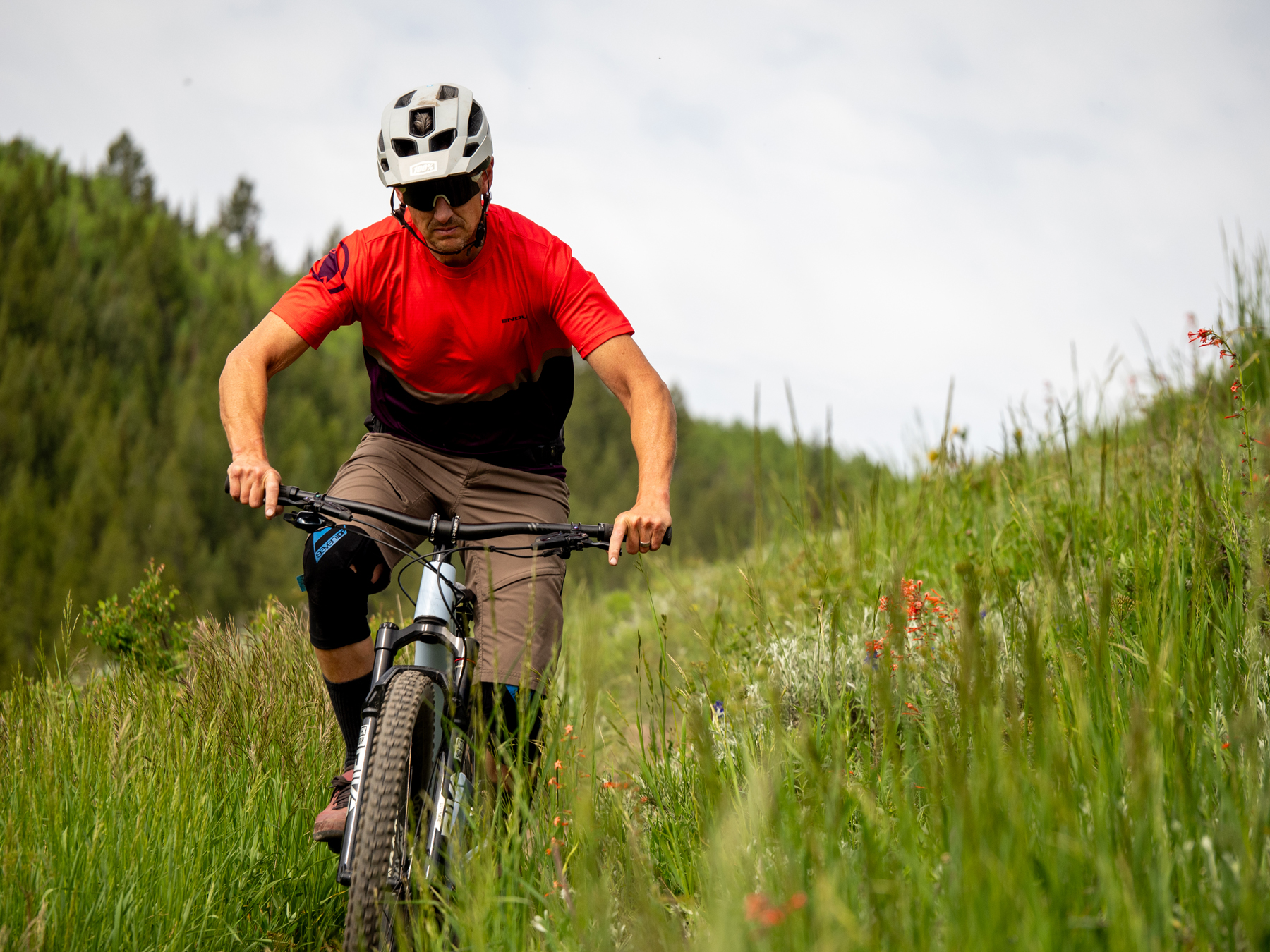
Bottom Line
Simon: I wrote in my Flash Review that if I were handed a blank piece of paper and asked to sketch out the geometry of my ideal aggressive short-travel bike, it would look almost identical to the 2030. Now, after loads of miles, that statement is truer than ever. But the 2030 offers much more than great geometry, it also has excellent suspension and thoughtful builds that make it a very compelling choice in the Trail Bike category.
Deep Dive Comparisons
BLISTER+ members and those who purchase our Digital Access Pass can check out our Deep Dive comparisons linked below. Get our Digital Access Pass to view all our Deep Dives and Flash Reviews, or become a BLISTER+ member today to get access to that and a LOT more, including the best worldwide Outdoor Injury Insurance, exclusive deals and discounts on skis, personalized gear recommendations from us, and much more.

Deep Dive: SCOR 2030
We compare the SCOR 2030 to the Commencal T.E.M.P.O, Yeti SB135, Revel Rascal, Yeti ASR, and Santa Cruz Hightower.
Blister’s Flash Reviews and Deep Dives are accessible to those who purchase one of our paid subscriptions
To get our comprehensive Deep Dives and our initial, unfiltered reports on new gear, become a member and receive many other services, deals, and discounts.
If you’re already an active member, please log in.
(If you’re already logged in and a member in good standing and seeing this message in error, please refresh this page in your browser.)

Intriguing, but a bit heavy for a 120 bike. I suppose some of that is due to the ASTM 4 rating? How many people need their 120 trail bike to hold up to enduro service?
I bought this bike based upon my brother’s experience with the 4060 and the geometry numbers of the 2030 hit my dream bike wish list. He lives in the Bentonville area. I live in CO. I just rode it in Flagstaff, Crested Butte, and Summit County. It is so precise, fun, and fast. It’s kind of blowing my mind how good it is. My big bike is a v3 Evil Wreckoning Push’d. I only wished I had it last weekend on Baker’s Tank due to tire liners and more travel. Regardless, I still hit my top 3 fastest descent on the SCOR. It corners better than any bike I’ve ever ridden and I’ve been riding for 30 years and would have retired early if it wasn’t for bike spend. I could easily see this bike in a 150/130 setup as your only Mtb. Also, the ladies love the Ice Baby blue frame color. They all want to chat with me about it.